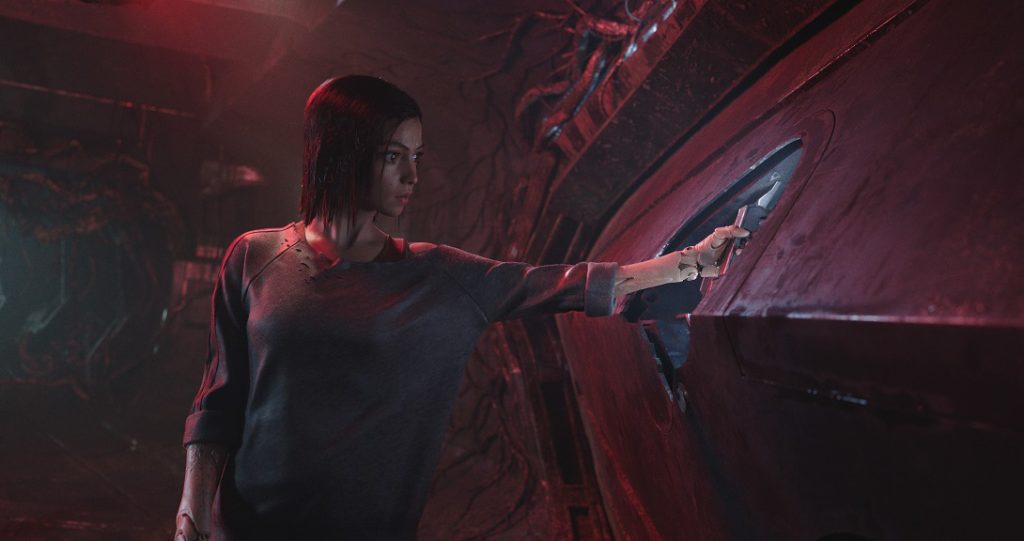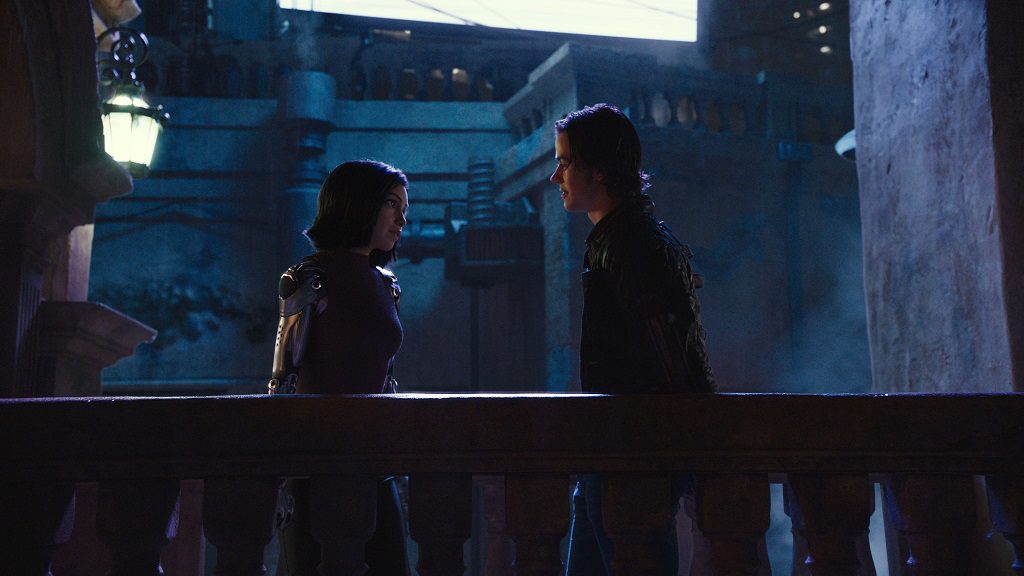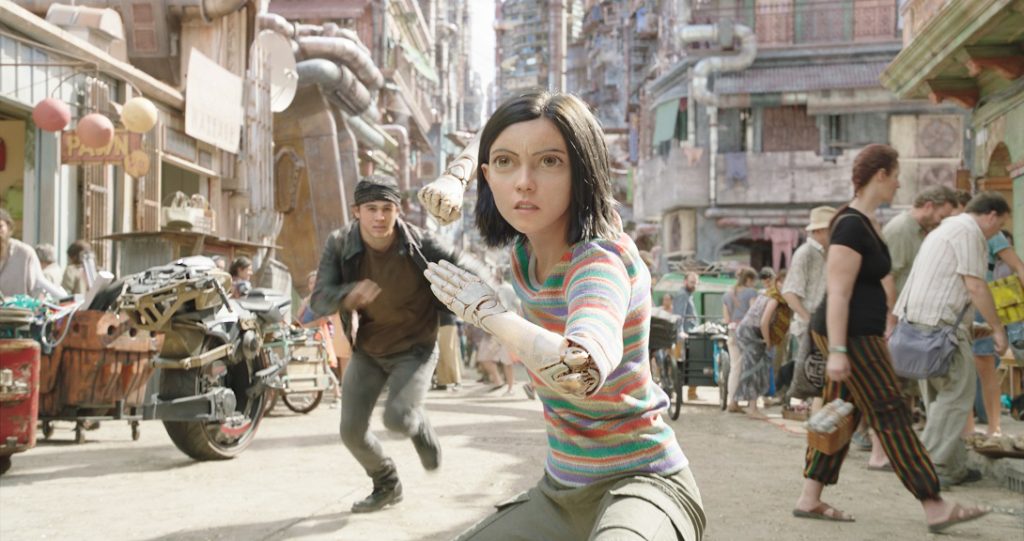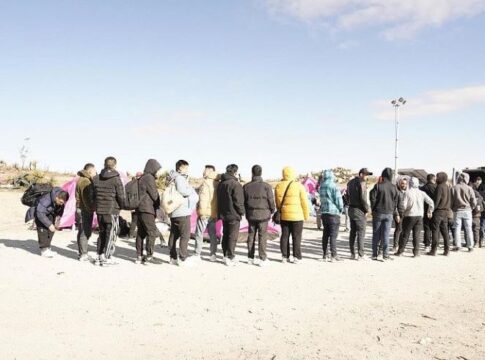
By Erin Wen Ai Chew
It is rare that we find strong and robust young female heroines who do not conform to the stereotypical Western/Hollywood standards of beauty of “blonde hair, blue eyes” in major film blockbusters. It is even rarer not to see a typical White male protagonist as the world’s “White savior”. This is what sets film Alita: Battle Angel apart from other sci-fi/superhero films, as its primary character/protagonist is a young female cyborg whose body mind, body and spirit was built to be an elite warrior.
For those of us like myself who grew up reading manga and watching anime, you know that Alita: Battle Angel is based off the manga Gunnm created by Manga artist Yukito Kishiro, who I had the opportunity to have a quick interview with. Actress Rosa Salazar plays the badass Alita, who is a cyborg warrior built to fight for what is good, equal and just. Her head and chest were found in the year 2563 in the Iron City scrapyard by renowned scientist Dr. Dyson Ido (Christoph Waltz) who finds that both her brain and her heart ( known as “the core”) are alive and extremely strong – so he uses his skills to put her back together. Alita essentially becomes Ido’s adopted daughter, and she finds that she had no memory of her previous life and starts to remember snippets of it when she is in life/death situations.
All the other female characters were absolutely robust, badass characters, but in addition to Alita, I will just highlight the character played by Lana Condor, Koyomi, a friend of Hugo ( played by Keean Johnson, who becomes Alita’s soulmate and the love of her life).
Before I get into the discussion about the female portrayals in the film, I will provide a few thoughts on what I thought about the film. Firstly, the entire film embodied female empowerment and showed audiences how young women ( who are all not the stereotypical blonde and blue eyed) can own the world, their independence and their methods of survival. If anything, this was the film’s strength and what kept my interest in watching how the characters of Alita and Koyomi developed throughout the film. Secondly, the visual effects/CGI were absolutely incredible in all the fight scenes, and in its recreation of the world of Iron City and the sky city of Salam. I felt how Iron City and Salam were created stayed true to how the city was portrayed in the original Manga. The scenes, which focused on the sport of motor ball, were jaw dropping and showed just how awesome the film’s visual effects/CGI were. Lastly, I loved the diversity of Iron City where everyone spoke different languages. With that, the audience could easily spot POC actors and actresses.
LATEST STORIES

Now to the bad part. Where, I felt Alita’s character was a strong warrior heroine, I didn’t like the parts of the film which showed her vulnerabilities to her love Hugo. I felt it was too much of a stark contrast from a cyborg built to fight, and it did not gel well with the fighting spirit of Alita. In addition, the film’s story line was slightly flimsy in how it attempted to stay on point with saving the world but dragged too much with soppy romance scenes.
Now to the analysis. I have seen online discussions that Alita: Battle Angel, has been whitewashed in terms of casting decisions in various Asian American focused groups, and it has been likened to that of ScarJo saga in being cast in Ghost in the Shell. I disagree with this, because Rosa Salazar who plays Alita is not White (while ScarJo is), and Salazar is actually Peruvian descent. Her playing Alita was a great casting decision and for me it is more important to see great characters being played by POC (people of color), because the struggle for representation and visibility is one, which needs to be fought on the POC platform and not just an “Asian” platform. Secondly, Asian American actress Lana Condor who plays Koyomi, has a significant supporting role and even though she was not the main supporting character of the film, her character had the opportunity to grow and to show that she owned her life and would do whatever the hell she wanted to do without adhering or being vulnerable to any authority. Both characters indirectly had female comradery” in how Koyomi was never against the actions Alita took (unlike other members of the friendship group) and how she supported the relationship between her friend Hugo and Alita. Moreover, if the end of the film is any indication, it is that there will be a second Alita: Battle Angelfilm and I would say we will hopefully see more of Koyomi in it.
Alita’s character in the film was presented as strong and robust when she was a warrior, but vulnerable when she was in love (which did not match and was a weakness of the film). However, focusing on her warrior persona which was the majority of the film, as a cyborg her fighting skills (which were martial arts based) and her will to defend and fight for those she loved was what amazed me most about the film. Like Koyomi, Alita did not care about authority nor did she care that her fight and battle was an uphill one. She never adhered to instructions, nor felt inferior to the big burly male humans and cyborgs who she was confronted with during battles. Her carefree attitude in this instance is a great POC/WOC female heroine which we all need, and yes, it is incredibly refreshing to see that the person who is the strongest in Iron City is not a white male savior.

Finally, remember how I mentioned at the start that I had the opportunity to have a quick interview with the original Manga artist for Gunnm ( aka “Alita: Battle Angel”) Yukito Kishiro? Well the questions I asked were all focused on the strong portrayals of female heroines and I asked him why he decided on that considering he as a Japanese man created this manga in 1990 – a time where this discussion was really at its preliminary stage. This is what he said:
“I remember at the time writing several narratives focusing on a male cyborg, and none of those narratives really captured the narrative and story I wanted to tell. So my editor gave me the idea of why not trying out a female protagonist. My editor had a theory that there are two types of manga artists – there are those who know how to portray female characters well and those who are not. I was apparently the former and so when I tried it out, the whole story just came to life. Creating it, I felt my inner woman started to come out even though I am a man, and I started to understand (on the surface) the feelings and issues women go through. I am glad that decades later this idea of having a female heroine/protagonist is an extremely important advocacy and discussion point”.
To end, all I will say is that Alita: Battle Angel is a worthwhile film to watch and if you have daughters and/or nieces, I suggest you take them to watch it as well so they can see how women of color (WOC) can be strong, robust and extremely independent. The film is now out in movie theaters everywhere, and if you can, I would suggest watching it in 3D because the visual effects were just absolutely incredible.
AsAmNews has Asian America in its heart. We’re an all-volunteer effort of dedicated staff and interns. Check out our Twitter feed and Facebook page for more content. Please consider interning, joining our staff or submitting a story.







